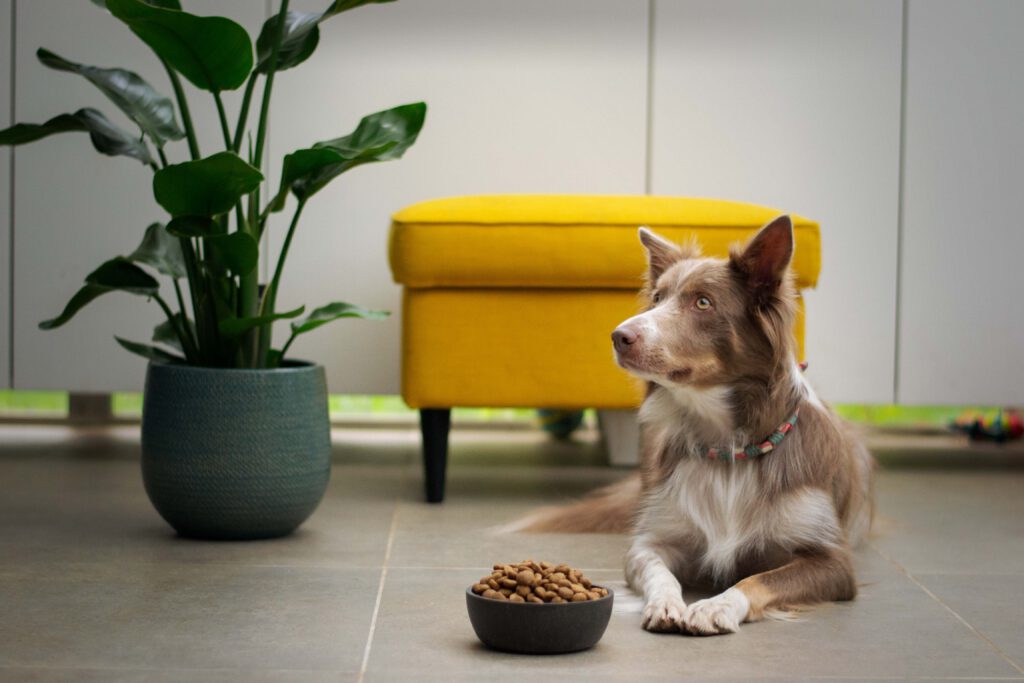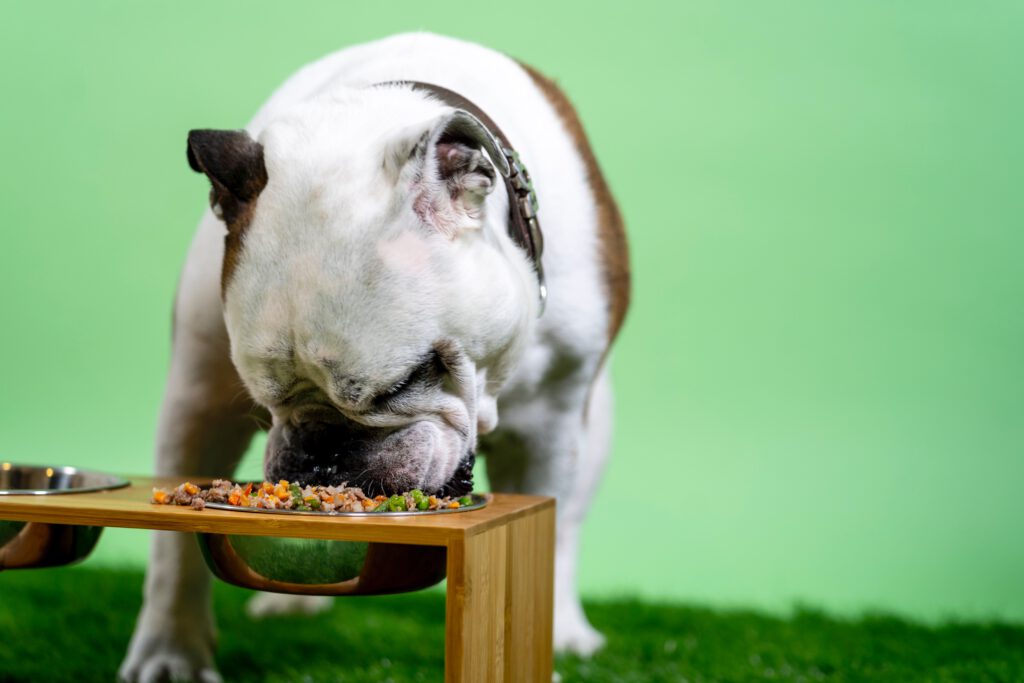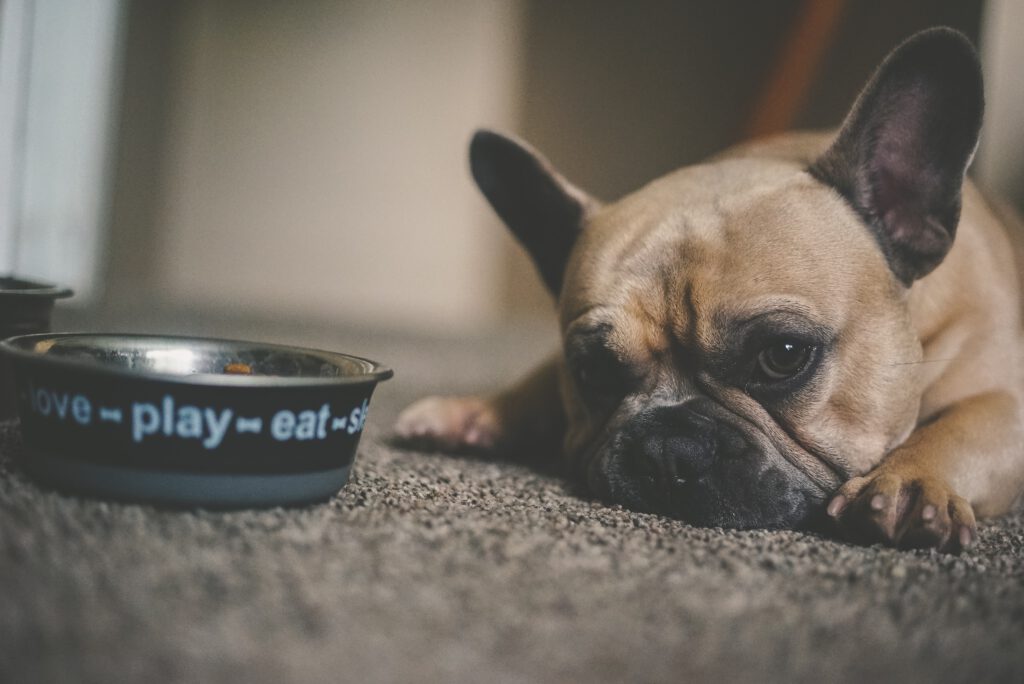
Dog owners are often confused by the quantities and weights shown on dog food packaging. Labels typically show the weight in pounds and the portion sizes in cups, but exactly how many cups are in a pound of dog food?
This question matters when deciding how much kibble to buy and what size container is needed. In this article, we’ll help you understand the relationship between dog food weight and volume.
Dog Food Calculator
If you already know the weight of your dry dog food, you can use this calculator to figure out how many cups or quarts of kibble are in the bag.
How many cups are in 30 lbs of dog food?
There are about 120 cups of kibble in a 30 pound bag of average-sized dog food.
How do you measure dog food portions?
Many dog food labels explain how many cups are in a portion size. If you do any cooking at home, you may already have access to a measuring cup that you can use for this purpose.
However, to avoid cross-contamination, dog owners often use separate measuring tools for their pet’s food. You can use a classic plastic scoop or even this collapsible scoop that doubles as a clip for the dog food bag.
How many cups are in 35 lbs of dog food?
35 pounds of dry dog food is equivalent to approximately 140 cups. This assumes that the kibble has an average size and weight.
One can of dog food equals how many cups?
There are 1.625 cups in a 13-ounce can of wet dog food.
How many gallons is a 50lb bag of dog food
You will find about 12.5 gallons in a 50-pound bag of dry dog food.

How should you measure a mix of dry and wet dog food?
We recommend that you calculate mixed wet and dry food amounts using the feeding instructions on the labels. Let’s look at an example.
Let’s say that your dog weighs 20 pounds. You have 2 cans of Blue Buffalo Homestyle Recipe Chicken Dinner and a bag of Taste of the Wild High Prairie.
According to the feeding instructions, your pup should either eat 2 cans of the wet food or 1 1/3 cups of dry food in one day. So if you want to mix the wet and dry food, mix one of the cans with two thirds of a cup of kibble.
How many quarts are in 30 pounds of dog food?
30 pounds of dog food is equal to 30 quarts.
How much is a cup of dog food in grams?
You can expect one cup of dry dog food to weigh about 113 grams. This assumes an average of 4 cups in a pound of kibble.
How many cups are in 40 pounds of dog food?
There are roughly 160 cups of dry kibble in 40 lbs of dog food.
How many quarts are in a pound of dog food?
If we assume that 4 cups of average-sized kibble weighs 1 pound, it follows that you’ll find 1 quart in a pound of dog food.
How much does a cup of dog food weigh?
It takes approximately 4 cups of dry dog food to equal one pound, so 1 cup of kibble weighs about 0.25 pounds, or 113 grams.
How many cups are in 24 lbs of dog food
There are 96 cups in 24 pounds of dry dog food.
How long does a bag of dog food last?
To figure out how long dog a bag of dog food will last, you should first determine how much you are feeding your dog. Also, we can assume that 4 cups of dry dog food weighs 1 pound.
Based on this information, if your dog eats 2 cups of food per day and the bag weighs 30 pounds, we can calculate that the food will last about two months.
How much dry food should you give a dog?
To determine how much to feed your dog, you should consider your pup’s age, breed, size, weight, and any health conditions. Follow the feeding instructions on the dog food packaging and consult your veterinarian if you have any questions.

Conclusion
Planning meals for your dog can be confusing, especially if a dog food label shows the weight but not the volume.
It is important to know how to calculate cups and quarts so that you can purchase a container of the correct size, decide how much food to buy at a time, and leave the right amount of food for a dog sitter.
We hope this article has helped you understand how to calculate volume when all you know is the weight in pounds.